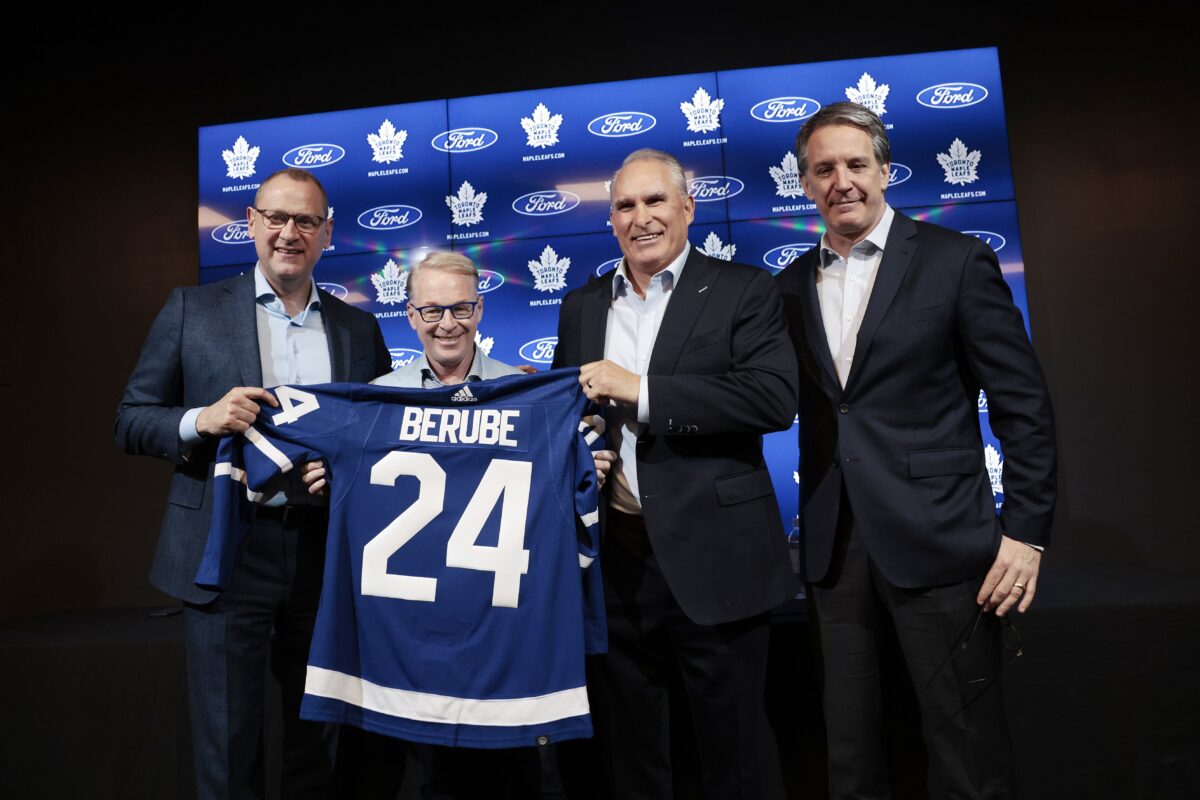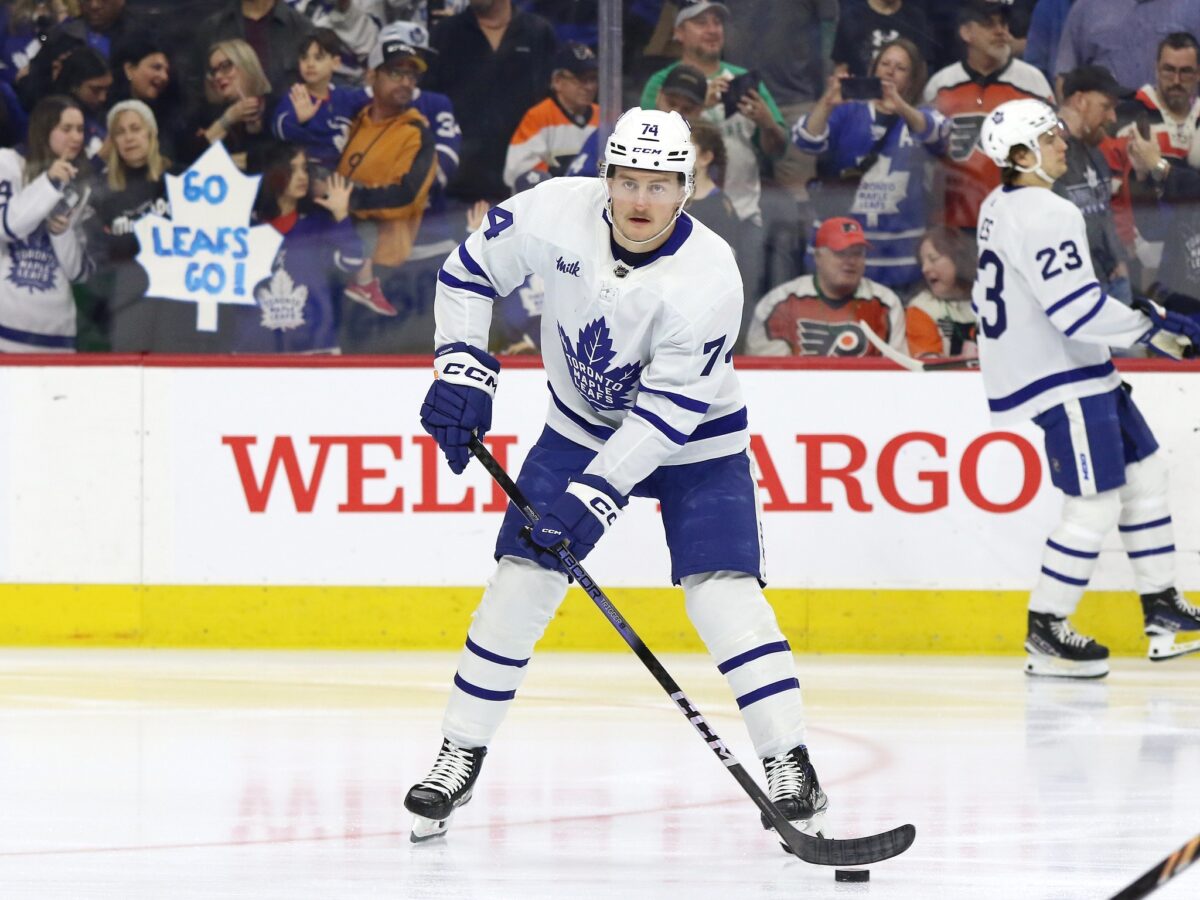Arguably the biggest loose end for the Toronto Maple Leafs ahead of training camp has been tied up, as Nicholas Robertson has agreed to terms on a one-year, $875,000 contract after initially expressing a desire for a fresh start elsewhere. This is certainly great news for the left-wing-starved club and a boon to general manager Brad Treliving to have the full roster under contract while maintaining a little bit of cap wiggle room. However, let’s not pretend that all the water is under the bridge just yet.
It was a little over two months ago that Robertson first made his trade request, with no games having been played in the interim. Any issues that the 22-year-old had with regards to available opportunities have only been resolved insofar as he was sold on the assurances reportedly given by new head coach Craig Berube. The newly signed deal, then, acts as something of a ‘prove-it’ arrangement for both sides, offering one season to see if the relationship between the player and team can still be viable in the long-term.
While Maple Leafs fans breathe a little sigh of relief in retaining the 2019 second-round pick to shore up a rather thin left-wing position, let’s explore what the ‘prove-it’ deal might mean for both sides.
Nicholas Robertson’s Side
Even with Robertson under contract, the matter of why he wanted out remains – and will surely be something that he will need to address once camp opens. The Pasadena, California native finally established himself as a full-time NHLer last season, recording 14 goals in 56 games (he spent nine games with the American Hockey League’s Toronto Marlies) and seeing action in six of seven playoff games. That said, opportunities further up the lineup were still hard to come by and he averaged just 11:23 of ice time in the regular season, down to 9:48 in the postseason.
If Robertson is determined to see his role with the club expand before committing long-term, then circumstances may ultimately enable just that. The Maple Leafs’ depth at left wing includes Matthew Knies, Bobby McMann, Pontus Holmberg and Conor Dewar, with Tyler Bertuzzi out of the picture after signing with the Chicago Blackhawks this summer. Within that group, Robertson should slot in consistently somewhere in the middle six, possibly on the second line alongside William Nylander and John Tavares.
Robertson’s trade demand came on the eve of free agency. Now that the roster has been fleshed out, he can likely see he’s expected to be a significant part of the puzzle. And if his unhappiness stemmed from other factors related to how the club has been managed, perhaps the new head coach will help ease any concerns. Berube isn’t known to be the player’s coach that Sheldon Keefe is, but some players respond better to tough, defensive-minded bench bosses.

Assuming Robertson’s discontent isn’t related to the city of Toronto, the fans, or any other unchanging factors, a scoring-line role and more ice time should help reap more production while keeping the speedy winger happy – a potential win/win.
You Might Also Like
- NHL Rumors: Bruins, Maple Leafs, Oilers, Blackhawks
- The Times Maple Leafs’ Tomas Kaberle Was Almost Traded
- Getting to Know the Newest Maple Leaf Alex Nylander
- Maple Leafs News & Rumors: Mrazek, Woll, Stolarz, Cassidy & Holl
- Maple Leafs Reportedly Kicking Tires on a Nazem Kadri Return
The Maple Leafs’ Side
Now, Berube and the Maple Leafs aren’t just going to blindly hand Robertson a cushy role and plentiful ice time because he played hard ball in the offseason. The trial nature of the 2024-25 NHL season is a two-way street for the player and team. Just as Robertson needs to see Toronto demonstrate a consistent commitment, they also need to see a player making the most of the opportunities given.
Can Robertson, for instance, remain higher on the club’s positional depth chart than McMann? Last season, McMann had 15 goals and 24 points in 56 games, posting eerily similar numbers to Robertson (14 goals and 27 points in 56 games). Robertson is about five years younger, but that may not matter much if McMann earns the coach’s trust early on.

The issues with Robertson have never been effort-related. Armed with high-level speed and a dangerous shot, he’s shown elite scoring ability in the AHL and flashes of potential in the NHL. However, he’s been held back by an inability to create space consistently and, perhaps more troubling, an inability to stay on the ice. While coming up through the ranks and bouncing between leagues, he has been slowed by knee injuries, fractured his fibula, and suffered a shoulder injury that required surgery and ended his 2022-23 season.
Like many other skilled forwards looking to carve their place in the NHL, Robertson faces the challenge of fit. If he can demonstrate a consistent scoring ability, he could cement himself as a mainstay among the Maple Leafs’ top lines – possibly for this season and beyond. If not, his 5-foot-9 frame doesn’t seem suited for a depth checking line and so another Marlies stint could be in the cards.
Any frustration Robertson may have with his experience coming through the organization is perfectly understandable. In five years since being drafted, he has been the subject of constant back-and-forth transfers between leagues, not to mention inconsistent usage along the way. Some of that isn’t his fault – few clubs have four long-tenured forwards locked into top-six spots like the Maple Leafs do. But he does assume accountability here in showing that, even if he isn’t quite on the level of an Auston Matthews or Mitch Marner, he can be relied upon to deliver consistent secondary scoring.
That is, in a nutshell, what’s on the line over the course of this ‘prove it’ season. Robertson needs to see that the franchise is committed to his development and recognizes him as an established NHL forward, while the Maple Leafs need him to earn that recognition. In that sense, this new contract could mark a mutually-beneficial partnership between two motivated sides.
